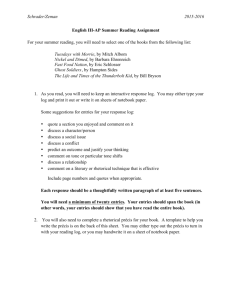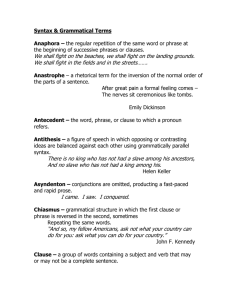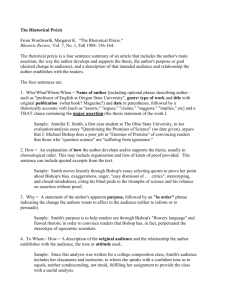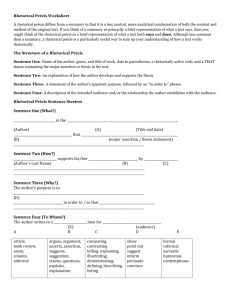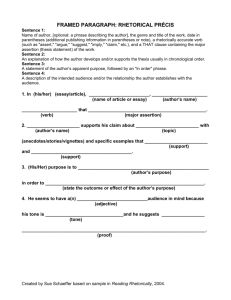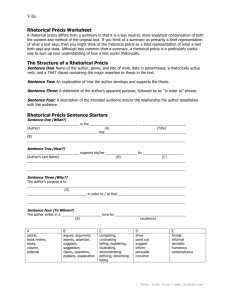PRECIS INSTRUCTIONS
advertisement
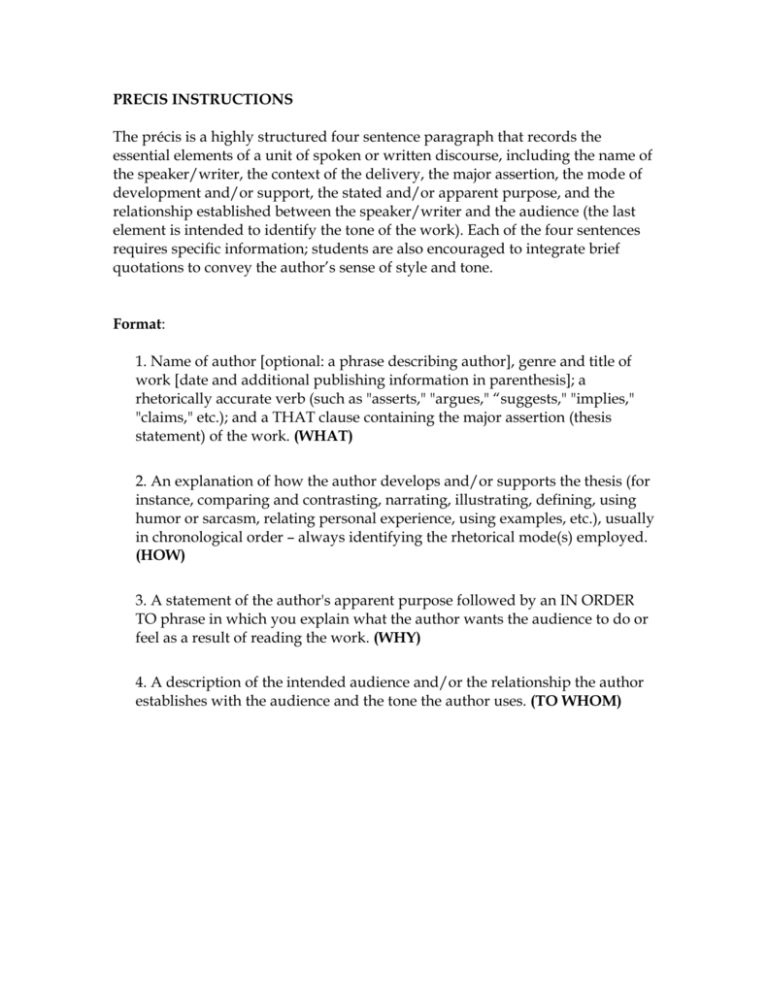
PRECIS INSTRUCTIONS The précis is a highly structured four sentence paragraph that records the essential elements of a unit of spoken or written discourse, including the name of the speaker/writer, the context of the delivery, the major assertion, the mode of development and/or support, the stated and/or apparent purpose, and the relationship established between the speaker/writer and the audience (the last element is intended to identify the tone of the work). Each of the four sentences requires specific information; students are also encouraged to integrate brief quotations to convey the author’s sense of style and tone. Format: 1. Name of author [optional: a phrase describing author], genre and title of work [date and additional publishing information in parenthesis]; a rhetorically accurate verb (such as "asserts," "argues," “suggests," "implies," "claims," etc.); and a THAT clause containing the major assertion (thesis statement) of the work. (WHAT) 2. An explanation of how the author develops and/or supports the thesis (for instance, comparing and contrasting, narrating, illustrating, defining, using humor or sarcasm, relating personal experience, using examples, etc.), usually in chronological order – always identifying the rhetorical mode(s) employed. (HOW) 3. A statement of the author's apparent purpose followed by an IN ORDER TO phrase in which you explain what the author wants the audience to do or feel as a result of reading the work. (WHY) 4. A description of the intended audience and/or the relationship the author establishes with the audience and the tone the author uses. (TO WHOM) Further Details and Explanation of Purpose: The first sentence is probably the most difficult. Students should be careful to employ a rhetorically accurate verb followed by a THAT clause, avoiding the use of more general words such as "writes" and "states." The THAT clause is designed to demand a complete statement: a grammatical subject (the topic of the essay) and predicate (the claim that is made about that topic). If the THAT clause is not employed, students will end up allowing "about" and "how" to slip out in stating the thesis: i.e., "Sheridan Baker writes about attitudes in writing" or "... states how attitudes affect writing" -- neither of which reports what he claims to be true about attitudes. The second sentence is less structured. Sometimes it works best to report the order of development: "The author develops this assertion first, by applying these techniques to two poems; second, by providing definitions; and third, by explaining the history of each approach." A more general statement may also work in the second sentence: "The author develops this idea by comparing and contrasting the lives of these two Civil War heroes." In works of literature, the second sentence may provide a short plot summary: "Hemingway develops this idea through a sparse narrative about the 'initiation' of a young boy who observes in one night both a birth and a death." The third sentence sometimes inadvertently restates the thesis: "The author's purpose is to prove that..." Remember that one’s purpose is always to put forward a thesis, but there are others as well. The infinitive “to" phrase should transcend a phrase such as “Her purpose is to inform…." Look beyond such a simplistic response to assess what the author wants the audience to do or to feel as a result of reading the work. In the fourth sentence, students need to ask how the language of the work excludes certain audiences (non-specialists would not understand the terminology; children would not understand the irony) in order to see that the author did make certain assumptions about the pre-existing knowledge of the audience. This sentence may also report the author's tone. *The preceding was adapted from Dr. Jo Koster and Tracy Hudson's "Rhetorical Précis," a condensation of Rhetoric Review.

